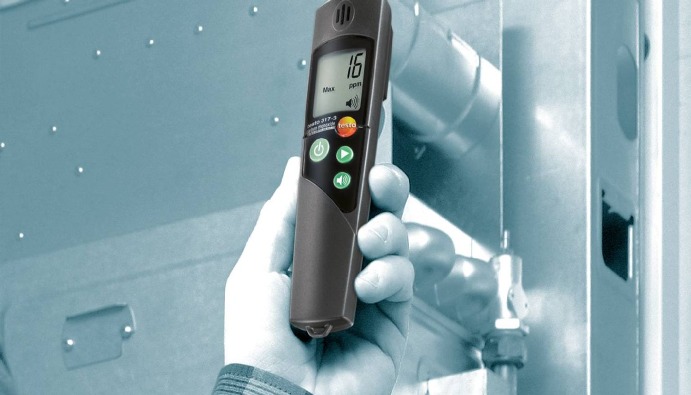
BLOG
KATEGORİDEKİ DİĞER YAZILAR

Carbon monoxide (CO) is a colorless, odorless, tasteless and toxic gas.
Carbon monoxide is produced by the incomplete combustion of natural gas and carbon-containing substances such as gasoline, kerosene, petroleum, propane, coal or wood. The most common source of carbon monoxide in the workplace resulting from inefficient combustion is internal combustion engines. Small gasoline-powered work tools are a serious source of carbon monoxide. Cigarette smoke and exhaust from motor vehicles also contain carbon monoxide.
Boiler rooms, warehouses, oil refineries, blast furnaces, coke ovens, breweries, steel production, pulp and paper production, ceramics and waste management industries are sources of carbon monoxide. Carbon monoxide poisoning has been reported in farmers who wash barns with pressurized gasoline using motorized vehicles. You can be exposed to carbon monoxide in enclosed spaces, such as mines, or in open spaces, such as large buildings or ports. Other occupations at risk of carbon monoxide exposure are taxi drivers, welders, car mechanics, firefighters, carbon black manufacturer, forklift operator, police, organic chemical synthesizer, metal oxide reducer, dock worker, diesel engine operator, tunnel toll booth worker, customs inspector, plastic foundry worker, iron forger. Emergency workers entering uncontrolled environments without carbon monoxide detectors have also suffered serious injuries and even deaths.
Red blood cells carry oxygen to the heart, brain, vital organs and the entire body. In people who breathe carbon monoxide, carbon monoxide interferes with the ability of red blood cells to carry oxygen; it displaces the oxygen in these cells and thus deprives vital organs of oxygen. A person exposed to high levels of carbon monoxide can become weak, unconscious and even die within minutes. With timely intervention, the harmful effects can be reversed. However, even if recovered, it can have lasting negative effects on vital organs such as the heart, brain and reproductive health.
Carbon monoxide poisoning initially resembles a flu without fever. Headache, chest tightness, shortness of breath, fatigue, dizziness, drowsiness and nausea may occur. As symptoms worsen, muscle weakness, vomiting, confusion and loss of consciousness occur. The confusion caused by this gas prevents the person exposed to the gas from realizing that there is danger.
Carbon monoxide taken by the mother passes to the baby through the umbilical cord. Carbon monoxide is cleared from the baby's blood much more slowly. So, the baby is at a much higher risk than the mother.
With the “ASTM D 4490” standard method, the detection of carbon monoxide, which is a toxic gas, is carried out in working environments using detector tubes. Detector tubes can be used in both short-term sampling (1-10 minute sampling) and long-term sampling (1-8 hour exposure) involving toxic gases and vapors. The given volume of air is drawn into the tube by means of a mechanical pump. If the desired analyte is present in the air drawn into the detector tube, the selective indicator in the tube will chemically react with the analyte and change color. The concentration of the gas or vapor can be estimated either by comparison with a calibration graph or by comparing the length of the color change in the tube with a reference.
Nanolab Laboratories Group continues to provide services within the scope of CO (Carbon Monoxide) Analysis in the Environment. We also provide services in Lighting Measurement.
Contact us for more information.
You can follow us on LinkedIn for up-to-date news and posts about our services.
Follow our Instagram account to be informed about our latest blog posts.